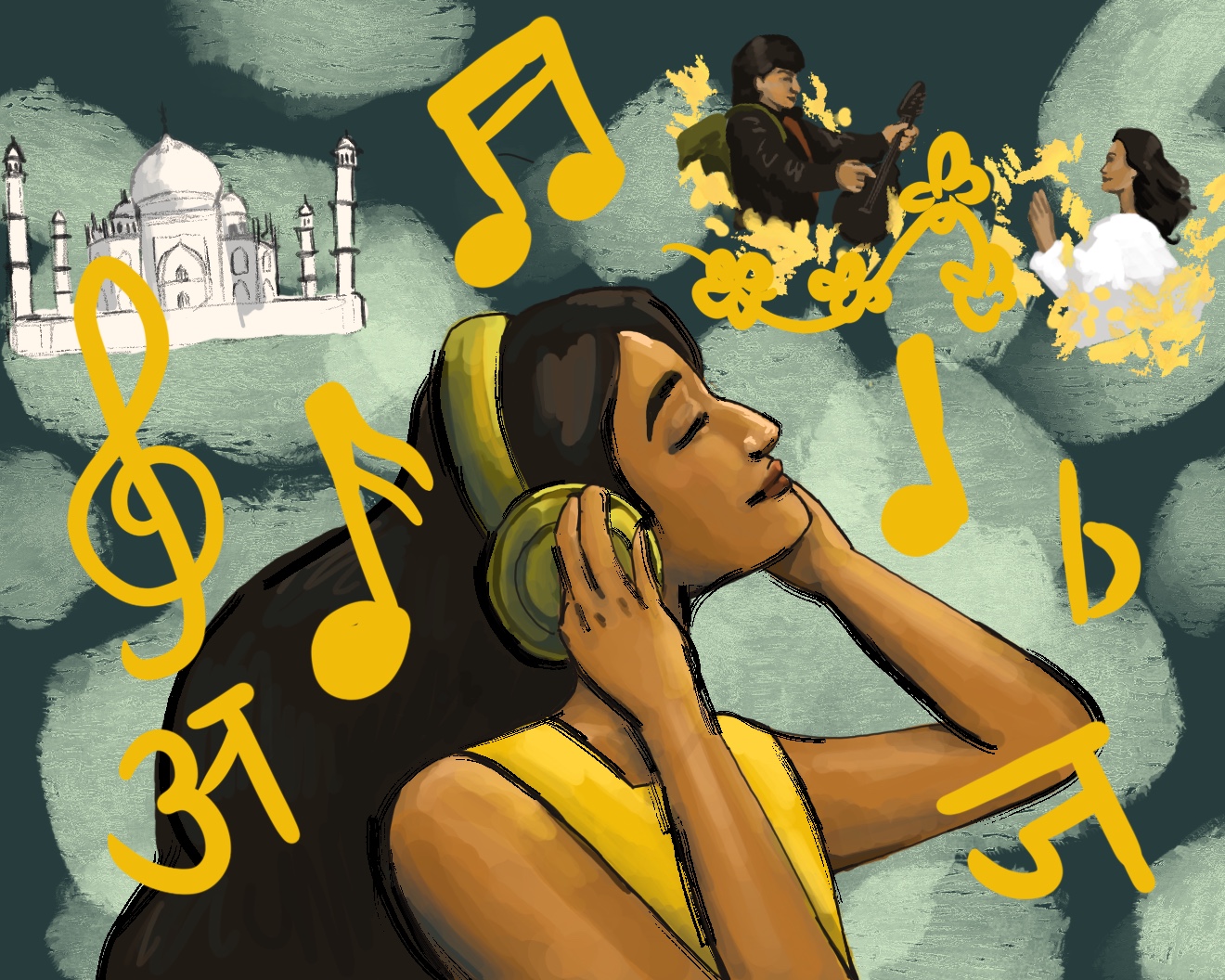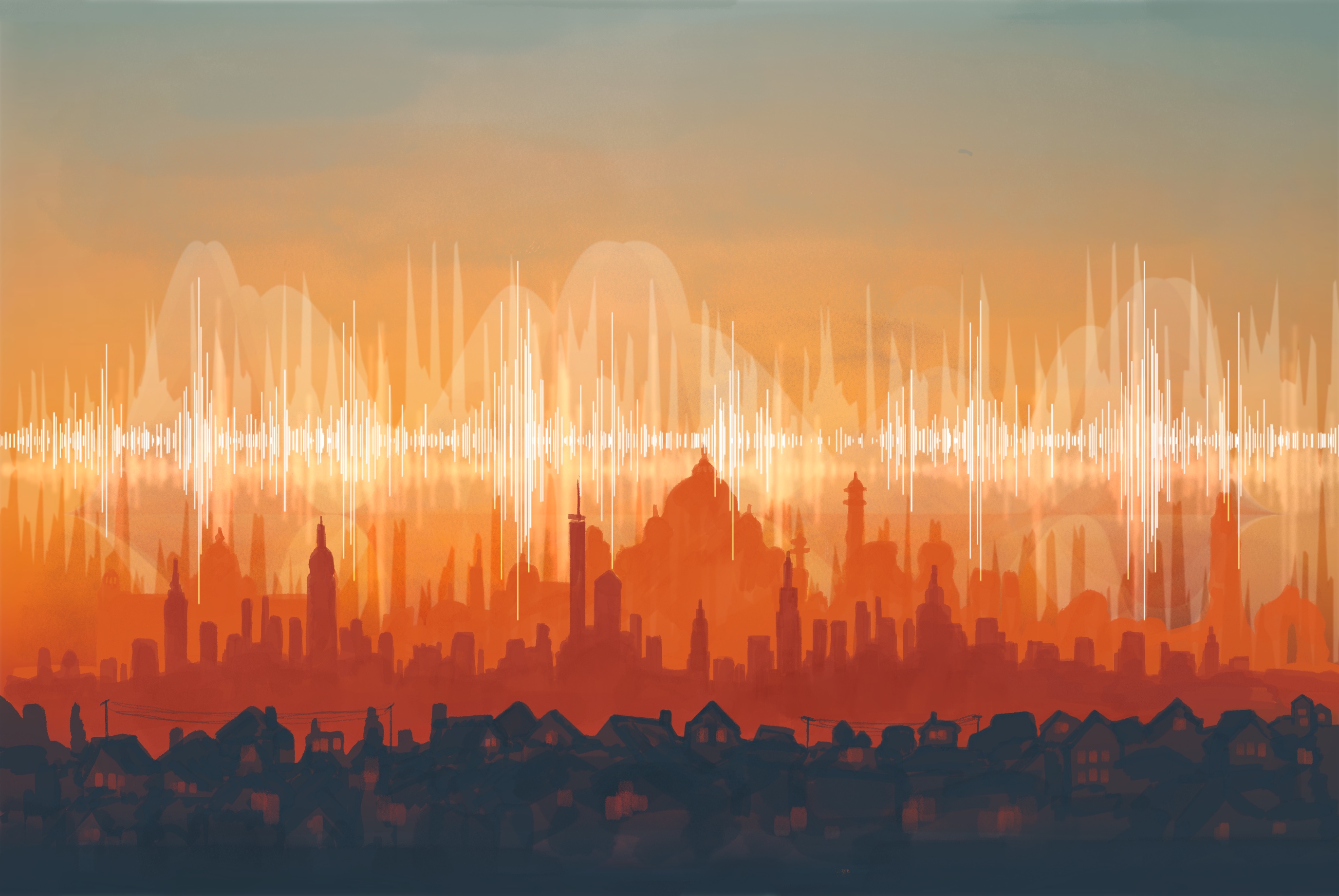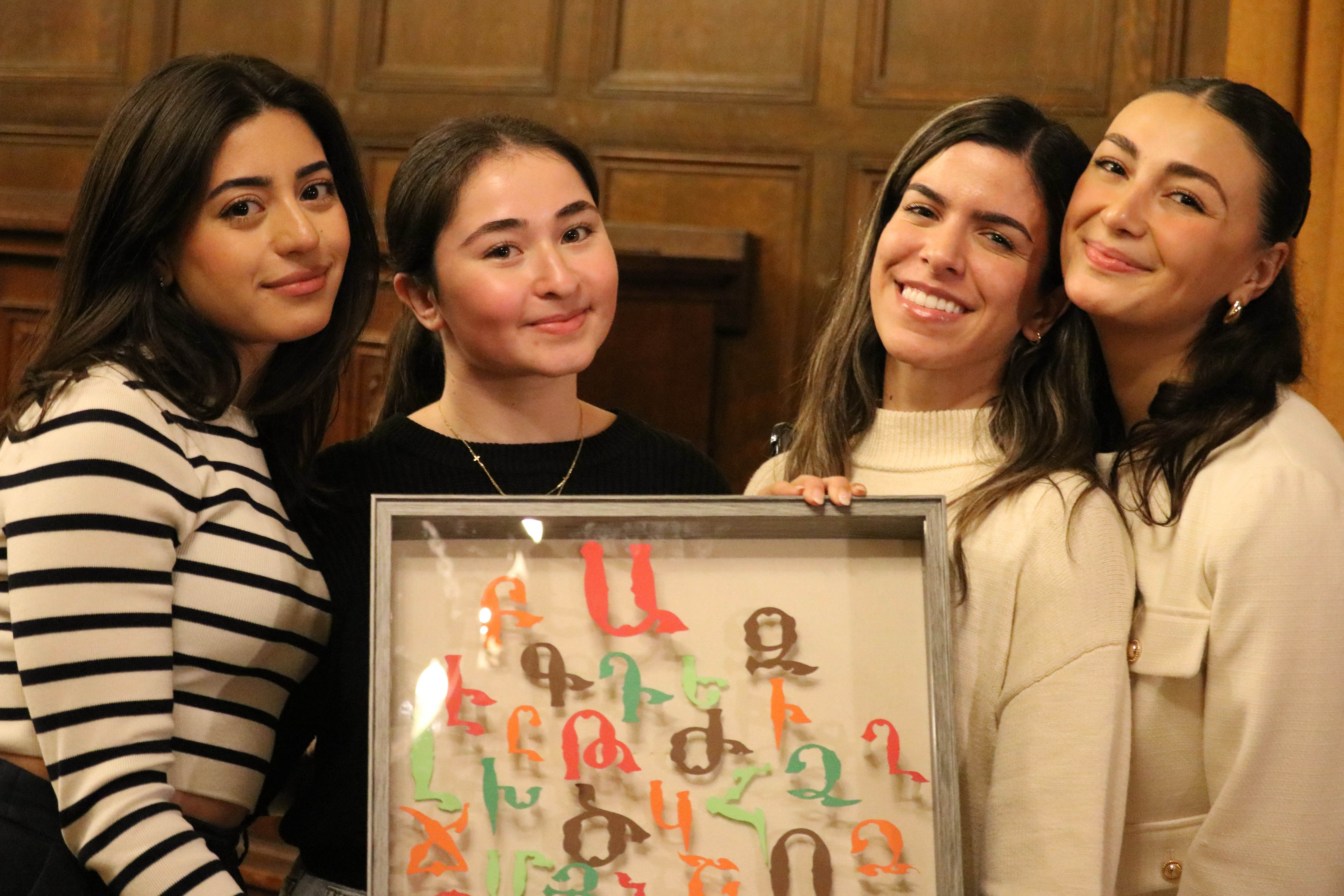Opinion: Bollywood music connects community, deepens cultural roots amid language barriers

(Kathalia Wong/Daily Bruin)
By Prisha Puntambekar
May 23, 2024 11:39 p.m.
This post was updated June 30 at 8:55 p.m.
From a young age, I recall spending late nights at special family gatherings dancing to Bollywood songs, regardless of whether I understood them or not. As I grew older, my Hindi comprehension skills remained limited but the sounds of Bollywood continued to play a vital role in upholding my Indian identity.
As a child of immigrants, I spent years trying to bridge the gap between my experiences with Indian culture at home and Western culture outside it. Right as I felt I had become accustomed to balancing these two worlds, I was faced with yet another challenge – moving to college.
At home, I was always exposed to my culture through celebrations of Indian festivals with my family and close friends. I felt strongly tied to my Indian identity when getting dressed in traditional clothing, feasting on Indian festival food and paying homage to the history behind Indian celebrations.
While these events played a large role in my connection with India, my daily experiences were equally valuable.
Regularly conversing with my family in our native language, overhearing loud Indian soap operas from my grandmother’s room and enjoying my mother’s home-cooked, simple Indian meals were staples of my everyday routine.
When I moved to UCLA, however, my sense of culture was no longer reinforced regularly – an issue that was only exacerbated by a language barrier.
Growing up, I learned to speak Marathi – an Indian language from my family’s native state of Maharashtra. Although learning Marathi helped me develop a deeper connection with my ancestral roots, I found it challenging to engage with the broader Indian-American community, as Hindi remains the predominant language.
When walking to class or taking the elevator, I often overhear other Indian students conversing in Hindi. In those moments, I recognize the language they speak, but my inability to understand their words hinders me from fully relating to other members of the South Asian community.
Instead, those fleeting interactions remind me of personal detachments from my Indian roots, which have largely resulted from a need to assimilate with my non-Indian peers.
Things began to change, however, as I attended more Indian social events on campus and listened to the sounds of my community.
Various cultural clubs host parties that involve food, laughter and meeting new people – but most importantly, music. The DJs ensure we dance the night away to a mix of Western music and Bollywood songs, allowing all attendees to feel an intertwining between their Indian culture and American lives.
While Bollywood was always a part of my life, after attending larger Bollywood-themed events I felt encouraged to dive deeper into the genre on my own time.
I explored playlists on Spotify and rediscovered Hindi songs that I had forgotten about. In the haven of my dorm, I danced to the upbeat rhythms of “Badtameez Dil” and swayed to the romantic melodies of “Ye Ishq Hai.”
By listening to Bollywood songs, I began to appreciate the unique sound that sets them apart. Unlike the mainstream Western music I grew up with, Bollywood songs combined instruments and production in a manner that practically forced me to dance along.
Bringing the energetic Indian dance culture to our campus, Bruin Bhangra is a UCLA dance team that performs the Punjabi dance style of Bhangra.
Mehma Jolly, a third-year human biology and society student and co-president of Bruin Bhangra, said living in India for a few years taught her about Indian classical music and sparked an appreciation for modern artists who incorporate traditional or folk instruments.
“No matter how I’m feeling, I can use Indian music to get me through whatever I’m going through,” Jolly said. “It has really kept me close to my culture. I think that is the biggest thing and I am extremely appreciative of that because now my culture is an insanely big part of my life to the point where I’m one of the presidents of Bruin Bhangra, which is a really big role. And I definitely could not have imagined myself doing that a few years ago.”
In my experience, Bollywood music transcended the language barriers I faced. While I struggle to understand every lyric of my favorite Hindi songs, I resonate with the ideas conveyed through music, emphasizing that language surpasses words.
On crowded dance floors, I dance along to various Indian songs and feel connected with my fellow Indian peers who are dancing with me. We move with the same rhythm that we picked up from watching endless Bollywood movies and feel the same nostalgia listening to Bollywood songs from our childhood, such as “Desi Girl” and “Zoobi Doobi.”
In those moments, my shortcomings in Hindi are no longer as relevant.
Other Indian organizations on campus like Nashaa, a Bollywood fusion dance team, also embrace connecting with the general feeling of a song rather than the lyrics.
“I never look at the lyrics or search up the definition of a song. For me, for a piece that I’m choreographing, I look in terms of the beats, the backbeats, the music and what that means to me and what I want to choreograph,” said Aishwarya Manga, a second-year psychobiology student and captain of Nashaa.
That being said, while Bollywood music allowed me to connect with my community without speaking Hindi, it simultaneously inspired me to further my knowledge of the language.
To the delight of my parents, I downloaded Duolingo and was inspired to set out on a journey of learning Hindi. To my surprise, I quickly realized that Hindi was not so different from Marathi and began picking up the language faster than I expected.
While I am far from fluent, my 90-day Duolingo streak indicates some promise for the future of my cultural immersion.
At the beginning of my first year at UCLA, I was met with the challenge of maintaining my cultural ties without the support I relied on at home. Now, as I approach the end of my first year, I feel proud of the journey of cultural exploration I embarked on.
At last, Indian languages and culture no longer feel like a daunting, unfamiliar stranger – a transformation that would not have been possible without the sounds of Bollywood.





